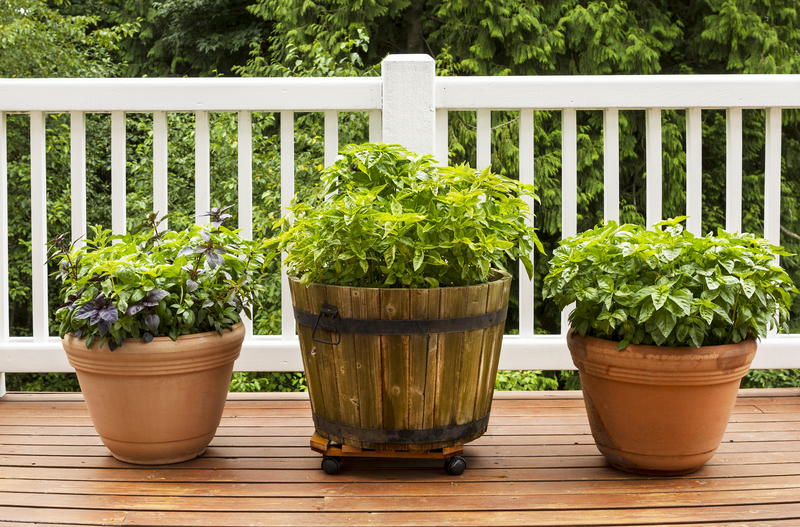How to Maintain a Lush Lawn During Hot and Dry Summers
A thick, green lawn is the pride of every homeowner. But when summer's intense heat and frequent dry spells arrive, it can feel like an uphill battle to keep your grass looking lush. Don't worry--keeping a healthy, vibrant lawn during hot and dry weather is achievable with the right techniques. In this comprehensive guide, you'll learn how to maintain a lush lawn during hot and dry summers, from smart watering and mowing tips to choosing the best grass varieties and seasonal lawn care strategies.
Understanding Summer Lawn Stress
Before diving into practical strategies, it's vital to understand what happens to your lawn during a hot and dry summer. High temperatures and scarce rainfall can put immense stress on turfgrass, causing browning, thinning, and sometimes permanent damage. Lawns rely on regular moisture for growth; without it, root systems weaken, and grass blades dry out.
Common summer stress symptoms include:
- Browning and wilting grass blades
- Patchy or thin turf coverage
- Weed invasion due to weakened grass
- Increased pest or disease issues
Arming yourself with the right lawn maintenance techniques can help you avoid these issues and enjoy a resilient, green yard even in the harshest summer weather.

Smart Watering Strategies for a Lush Lawn
One of the most critical components to achieving a thick, lush lawn during hot, dry summers is mastering the art of lawn watering. Here are key strategies for effective summer irrigation:
Water Deeply and Infrequently
Instead of frequent light watering, water your lawn deeply once or twice a week. Deep watering encourages grass roots to grow further into the soil, increasing their drought resistance. Aim for approximately 1 to 1.5 inches of water per week, including rainfall.
Water Early in the Morning
The best time to water is early morning (between 5:00 and 9:00 a.m.). Watering during this period minimizes evaporation, allowing more water to reach the roots. Evening watering should be avoided, as it increases the risk of fungal diseases.
Adjust Sprinklers for Uniform Coverage
Check your sprinklers to ensure even coverage across your lawn. Overlapping or missed spots can lead to patches of dry or lush grass. Adjust your system so all parts of the lawn receive consistent moisture.
Use Rain Sensors and Smart Irrigation
Consider installing rain sensors or a smart irrigation controller to optimize watering. These devices detect weather conditions and adjust watering schedules accordingly, reducing waste and ensuring your lawn stays healthy during heat waves and drought.
Optimizing Mowing Practices for Summer
Mowing is not just about appearance--it's crucial for maintaining a healthy lawn during hot summers. These lawn mowing tips help keep your grass robust and resilient under summer stress:
Raise Mower Blade Height
Set your mower blade higher in the summer, ideally to 3-4 inches. Taller grass shades soil, reducing evaporation and helping maintain moisture. Longer blades also support deeper root growth, making your lawn more drought-tolerant.
Mow Less Frequently
During dry, hot periods, grass growth slows down. Reduce mowing frequency to avoid putting unnecessary stress on your lawn. Follow the "one-third rule": never remove more than one-third of the grass blade length at once.
Keep Mower Blades Sharp
Dull blades tear rather than cut, leaving grass vulnerable to disease and water loss. Regularly sharpen mower blades to ensure clean, healthy cuts.
Fertilizing for Summer Lawn Health
While fertilizers are essential for lush lawns, their timing and type matter greatly during summer:
- Avoid heavy nitrogen fertilization in peak summer heat--this can burn your grass.
- Apply a balanced, slow-release fertilizer in late spring or early summer if necessary.
- Use organic compost or topdress with finely screened compost to boost soil health and moisture retention.
Tip: If your lawn is already established and struggling during a drought, it's typically better to wait until the weather cools before fertilizing to prevent further stress.
Choosing the Best Grass Type for Hot, Dry Summers
Not all grass species are equally equipped to handle heat and drought. Selecting drought-tolerant lawn grasses can make a significant difference in summer lawn care.
Best Cool-Season Grasses for Summer
- Tall Fescue: Deep roots and good drought tolerance.
- Kentucky Bluegrass: Requires more water but can survive summer dormancy.
- Perennial Ryegrass: Fast germinating, moderately drought-tolerant when established.
Best Warm-Season Grasses for Summer Resilience
- Bermuda Grass: Excellent heat and drought resistance; thrives in sunny areas.
- Zoysia Grass: Handles heat, requires less water once mature.
- Buffalo Grass: Native, low-water needs, and ideal for arid regions.
Mulching and Soil Improvement Tips
Improving your soil's ability to retain moisture and protect roots can greatly boost lawn survival during a hot and dry season.
Consider Grass Clipping Mulch
After mowing, leave short grass clippings on the lawn. They return nutrients to the soil and act as a natural mulch, retaining moisture and keeping roots cool.
Add a Fine Layer of Compost
Topdressing with compost in late spring or early summer can:
- Increase soil organic matter
- Boost water retention
- Feed beneficial soil microbes
- Help resist summer drought
Preventing and Managing Weeds, Pests, and Diseases
Weakened, dry lawns struggle to outcompete weeds and are more prone to pest and disease outbreaks. Here's how to keep your summer lawn healthy and protected:
Maintain Healthy Turf Density
A thick, lush lawn is naturally more resistant to weed invasion. Overseed in the fall or early spring to fill in bare spots and maintain dense grass coverage.
Monitor for Common Summer Lawn Pests
Hot, dry weather can encourage pests like grubs or chinch bugs. Inspect your lawn regularly for signs of damage:
- Browning patches that can't be revived with water
- Lifted turf sods (indicating grubs below)
Control Fungal Diseases
Water early, avoid evening irrigation, and do not overwater. If fungal problems persist, select a lawn fungicide labeled for your grass type and follow application instructions carefully.
Addressing Lawn Dormancy During Extreme Heat
During prolonged drought or heat waves, even the best-tended lawns may temporarily brown or go dormant as a survival mechanism. This does not mean your lawn is dead--most grasses recover once moisture returns.
- Continue occasional deep watering (about once every 2-3 weeks) to preserve root viability.
- Avoid heavy foot traffic on dormant grass to prevent damage.
- Wait to fertilize until the lawn recovers and temperatures drop.
Remember: A healthy lawn can survive 4-6 weeks of dormancy without permanent harm.
Seasonal Aeration and Overseeding
Soil can become compacted from summer activities, impeding water flow and reducing root growth. Core aerate your lawn in early fall to relieve compaction and enhance water, air, and nutrient penetration.
- Aeration boosts root development for future summers
- Follow with overseeding to thicken turf and crowd out weeds
Essential Tips for Summer Lawn Care Success
- Monitor local watering restrictions and adjust your schedule accordingly
- Apply mulch or bark around landscape beds and edges to retain additional moisture
- Keep pets and kids off the lawn during peak heat to reduce damage
- Test your soil every few years: proper pH and nutrients support a thriving lawn
Remember, best practices for a lush lawn during hot and dry summers focus on resilience, water conservation, smart mowing, and maintaining a healthy soil environment.

Frequently Asked Questions About Lush Summer Lawns
Why is my lawn turning brown in the summer?
Browning during summer is often a response to heat and drought stress. Unless the grass is completely dead (tug gently on a few blades; if they resist, roots are alive), it will usually recover once cooler, wetter weather returns.
Should I water my lawn at night in the summer?
No. Evening watering can lead to fungal diseases due to longer moisture retention on grass blades. Always water early in the morning for the healthiest results.
Can I revive a dead-looking lawn during summer?
If your lawn is simply dormant, it will often green up with regular watering and cooler temperatures. However, if there is excessive damage, consider overseeding or sodding in the fall.
Is it better to mow before or after watering?
Mow when the grass is dry to avoid clogged clippings and reduce stress on the blades. Avoid mowing immediately after watering or rainfall.
Conclusion: Enjoy a Beautiful Lawn All Summer Long
Mastering how to keep your lawn green during hot and dry summer weather requires a balanced approach of smart watering, proper mowing, soil care, and using the right grass for your climate. By implementing these proven practices, you can have a healthy, thriving lawn that withstands summer's toughest conditions--making your home the envy of the neighborhood!
Start early, stay consistent, and your lush lawn will reward you all summer long!